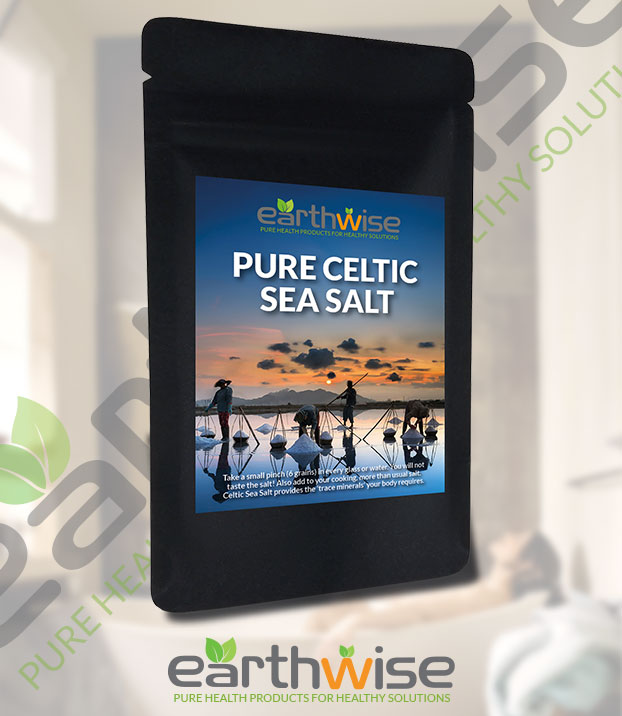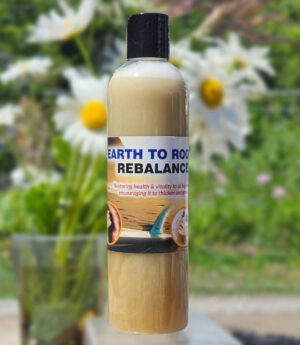Pure Celtic Sea Salt
Celtic sea salt is also called “Sel de Guarande” or “Sel gris” and comes from France. The famous sea salt from Guerande has been harvested by salt farmers of Brittany, France, according to ancient tradition for more than 2000 years. The salt fields consist of grey-blue clay. This clay gives important minerals and trace elements to the salt crystal and this gives Atlantic sea salt its unique light grey colour and unmistakable taste. Seawater from the ocean is led through channels through shallow clay marshes. The processes that then occur give the very specific properties of the Celtic Sea Salt.
Traditional ‘high street’ celtic sea salt is harvested from the top layers of the salt beds. The top layers are sun bleached and rained on, washing a lot of the minerals to the lower layers which are now saturated with the trace minerals essential for good health.
We only use the more powerful lower layers from the salt flats of Bittany, France.
£9.75
Description
Traditional ‘high street’ celtic sea salt is harvested from the top layers of the salt beds. The top layers are sun bleached and rained on, washing a lot of the minerals to the lower layers which are now saturated with the trace minerals essential for good health.
We only use the more powerful lower layers from the salt flats of Bittany, France.
Celtic sea salt is also called “Sel de Guarande” or “Sel gris” and comes from France. The famous sea salt from Guerande has been harvested by salt farmers of Brittany, France, according to ancient tradition for more than 2000 years. The salt fields consist of grey-blue clay. This clay gives important minerals and trace elements to the salt crystal and this gives Atlantic sea salt its unique light grey colour and unmistakable taste. Seawater from the ocean is led through channels through shallow clay marshes. The processes that then occur give the very specific properties of the Celtic Sea Salt.
• The acidic clay neutralizes the very alkaline seawater
• The sodium content of the seawater is reduced from 98% to 90%, creating the most sodium-deficient sea salt
• The clay has a purifying effect on the salt, neutralizing impurities in the seawater.
In short: the Celtic sea salt is, therefore, a special salt with very specific properties.
Traditional production of Celtic Sea Salt
For centuries, the production of Celtic Sea Salt has been done by hand. In several successive salt ponds, seawater slowly becomes Celtic sea salt. Atlantic seawater flows in summer at high tide through a canal system in a first salt pan, where it comes to rest, so that large particles in the water can settle.
The pure seawater that remains is led further to the next salt pan. This and subsequent salt pans have a clay base full of minerals and trace elements. The clay slightly reduces the sodium content in the seawater.
In the last salt pan, the seawater, which is itself full of minerals and trace elements, is calmed again so that the sun can evaporate the water. The minerals and trace elements are absorbed into the salt which slowly settles to the bottom. The top layer of salt, which has had the least contact with the clayey subsoil and is almost white in colour, is then skimmed off by hand.
The remaining salt, which is grey in colour and contains more minerals and trace elements than the Fleur de Sel, is then skimmed off by hand. This moist sea salt is then dried for half a year, after which it is scooped directly into the packaging without further treatment.
Taste and use
The Celtic sea salt with its strong but mild salty taste is suitable for many dishes. Due to its high residual moisture, it is not suitable for use in a salt mill. It is, however, an excellent substitute for common salt, or table salt (bad for you!).
Celtic sea salt – the process
The entire purification process in the canals takes about two weeks. After this period, the saltwater is collected in a basin, where the seawater evaporates through the sun. Evaporation leaves only the salt crystals, after which the paludier (salt extractor) can extract the salt by hand.
The uniqueness of Celtic sea salt is that the salt is not dried and refined afterwards. As a result, the original minerals remain present in the Celtic salt. As a result, the Celtic salt is completely free of contaminants from seawater. The unique feature of Celtic sea salt is that it is not dried and refined afterwards.
Only logged in customers who have purchased this product may leave a review.








Reviews
There are no reviews yet.